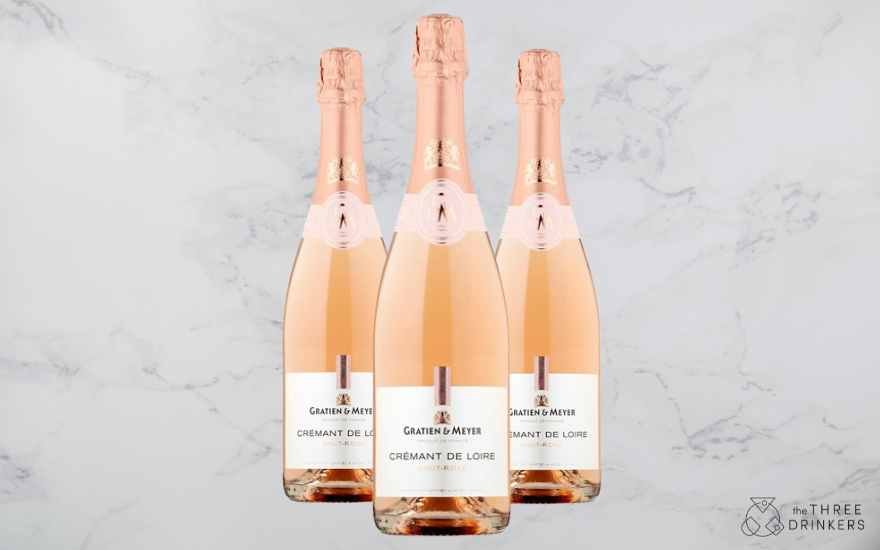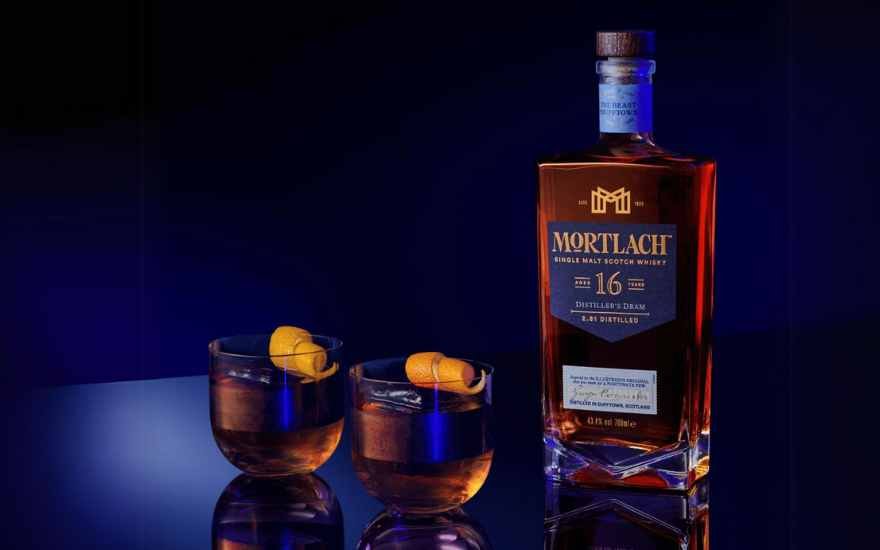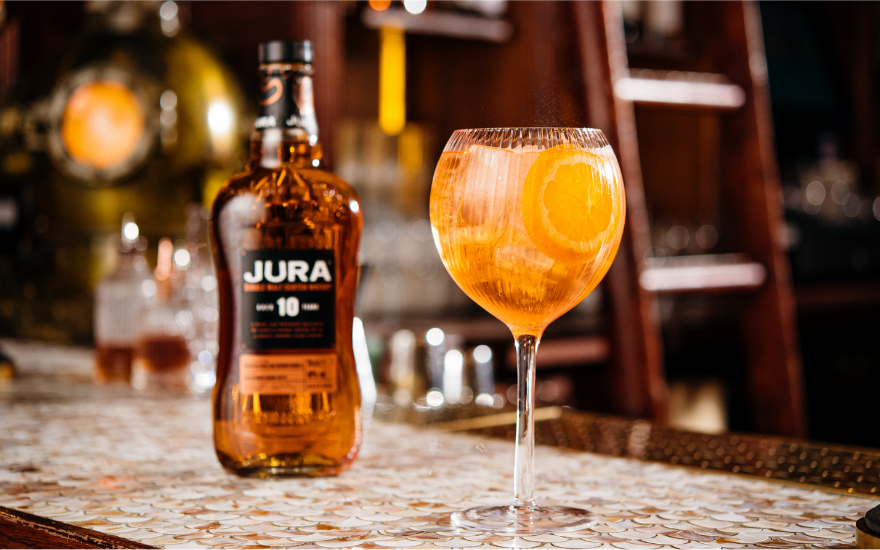Sparkling wine tends to come to many of our minds during springtime, encouraged by the warmer weather and the celebratory period as wedding season beckons. Sparkling French wine is perfect for these occasions, but did you know there’s so much more out there than just Champagne? We're talking about Crémant which has enjoyed increased popularity lately, so you might be keen to know what it is and why Crémant sparks such interest. Let's delve further into the world of Crémant to find out more!
What is crémant?
First of all. Crémant is a sparkling wine variety, which is quality wine that can be either white or Rosé, produced within 8 specific regions in France (also referenced as appellations) – we will come back to those specific regions later. As the French treat Crémant as seriously as they do Champagne, the production of Crémant is protected, which is known as being AOC classified (controlled origin appellation) and the appellations are authorised by the INAO (France’s regulatory body for appellations). This means that not any old sparkling wine produced in France can just call itself a Crémant! Crémant is made by the traditional method production (similar to Champagne) and this specific production type binds all 8 appellations. There is even a National Federation of Crémant Growers and Producers that was founded in 1982!
Where does crémant come from?
Coming back to those 8 regions mentioned above, Crémant is produced in Alsace, Bordeaux, Burgundy, Die, Jura, Limoux, Loire and Savoie – these regions cover most of the corners of France, so this sounds like the perfect excuse for a spot of wine tourism with a French road trip following this wine route! Some of these regions, such as Bordeaux, may already be known to you for their still white and red wines and now you can also combine the usual wine tasting visit with tasting some bubbles too! The Crémant name is protected by the National Federation of Crémant Growers and Producers which encourages the knowledge and promotion of their beloved wine on a national and international scale.
What is the difference between champagne and crémant?
This is a good question as these are both sparkling wine varieties produced in France but the key difference is that Champagne can only be produced in the Champagne region, whereas there are other regions to choose from that produce Crémant. Plus, of course there is the price difference with Crémant being a cost effective solution without reducing the taste quality as it’s produced in the same way to Champagne. Crémant can use different grape varieties (Champagne only uses Chardonnay, Pinot Noir and Pinot Meunier) and can also have a higher PH level than Champagne.
Does crémant differ depending on the region (appellation) that it is made from?
Again, this is a very good question as a 2009 community regulation contains the requisites that all Crémant wines must adhere to and yet there are also regional differences. What is common to all Crémant wines is that there is secondary fermentation in the bottle (this is where the delightful bubbles are created due to carbon dioxide). The rules for Crémant also mean that the wines are aged in the bottle for at least 9 additional months, which is where that yeasty smell and taste may be apparent, as there is that contact with the lees (dead yeast cells) when the wine is stirred. Crémant must also be sold only 12 months after the bottling process. Furthermore, the other rules for Crémant are quite stringent; they must be manually harvested, the wine needs to come from specifically squeezed grapes, and there are restrictions on the amount of sulphur chemicals and the level of sugar content too! Let’s explore France some more to truly get to know Crémant!
Alsace
Within the Alsace region, vineyards are planted close to the local villages and it is therefore not surprising that the region is the largest producer of Crémant with around 32.9 million bottles sold per year! According to the Alsace regional tourism board, those sales fall second to that of Champagne in the sparkling wine production, which is a very impressive statistic! Crémant d’Alsace accounts for approximately 24% of Alsace’s wine production and there are regional stipulations governing Alsace’s Crémants, so let’s talk about those!
In 1976, Crémant d’Alsace received its AOC classification but the wine producers from Alsace employed the traditional method for their sparkling wines since the late 19th century! Some of the Alsace Crémants will involve a blend of grape varieties but others may be a single grape variety. But, Pinot Noir tends to be the main grape variety which provides that delicate taste. However, Riesling, Pinot Gris and Chardonnay may also be present and Pinot Noir is the only variety used for the rosé version. As another tip, you can access the online directory for the Alsace wine route when in France!
Bordeaux
Bordeaux may be renowned for its delicious red wines but it is also a producer of quality Crémant sparkling wines! However, it was only in 1990 that the Crémant de Bordeaux received its AOC ranking. Similar to the Alsace region, Bordeaux also uses the traditional method for its crémant production and what you can expect from these Crémants, as indicated by the Bordeaux regional tourism board, are fine bubbles and aromatic wines. Crémant only accounts for 1% of the wine production in Bordeaux, making it one of the smaller Crémant producers but these typically use the same Bordeaux grapes as their still wines. Therefore, the main grape varieties you will see in a Crémant de Bordeaux are Sémillion and Sauvignon. For the Rosé Crémants, these might have a blend of Cabernet and Merlot.
Bourgogne
It was in the early 19th century that Champagne knowledge, via the village Rully, was imported to Bourgogne (Burgundy in English). But, the AOC classification for Crémant de Bourgogne was only received in 1975! Again, this Crémant uses the traditional method (méthode champenoise) and with Crémant de Bourgogne you can also find a Blanc de Blanc and Blanc des Noirs as well as the usual white and red varieties. You can expect to find the grapes of Chardonnay and Pinot Noir within these Crémants. There are approximately 19.2 million bottles sold each year which amounts to 10% of the wine produced in the Bourgogne region! Plus, there is the further segregation within Crémants from Bourgogne with the ‘eminent’ Crémants, aged for at least 24 months and the ‘grand eminent’ Crémants aged for 36 months or more!
Die (the Rhône)
From the Drôme Valley vineyards comes the Crémant de Die with its special location between the Alps and Provence. The vineyards therefore occupy some of France’s highest altitudes at nearly 700 metres! Die is approximately two hours away from Lyon in the south east of France and is one of the smallest Crémant producers. The appellation was received in 1993 and approximately 700,000 bottles of Crémant de Die are sold each year. The grape varieties typically used are Clairette, Aligoté and Muscat which create that green fruits aroma. Crémant de Die could also be combined with chestnut liqueur for a Kir which sounds like a very tempting cocktail to us!
Jura
Whilst this sparkling wine production dates back to the late 18th century, the AOC classification was only received in 1995! This appellation region is also connected with the Côtes du Jura, Arbois, Château-Chalon and L’Étoile. Crémant du Jura differs from some of the other appellations as there are five authorised grape varieties! These are Poulsard, Pinot Noir, Trousseau, Chardonnay and Savagnin. For white Crémants du Jura, there must be at least 70% of Chardonnay, Pinot Noir and Trousseau. At least 50% of Pinot Noir, Poulsard and Trousseau must be utilised for the Rosé and the grapes are hand harvested too! There are approximately 1.7 million bottles sold per year which accounts for around 16% of the total Jura AOC production. A fun fact is that there is also a specific Crémant du Jura flute glass specially designed to get the best out of your Crémant du Jura!
Limoux
Situated in the south of France and in the middle of the Languedoc, Crémant de Limoux was first mentioned in a document dating back to 1544 starting with the ancestral method of production. However, the AOC label was only granted to Crémant de Limoux in 1990, but it’s just one of five AOC classifications in the region. The AOC Crémant de Limoux typically consists of two main grape varieties being Chardonnay and Chenin with at least 90% of these varieties having to be used. Additionally, the other varieties Mauzac and Pinot Noir would use 40% maximum of the variety, of which 20% must be Mauzac. Like we said, it can be strict and precise! The grapes will be hand picked and the Crémants produced by the traditional method. The Crémants de Limoux are typically Brut with a floral aroma and the region sells approximately 5.8 million bottles per year. What is also exciting, as mentioned by the Limoux regional tourism board, is that the 33rd edition of the National Crémant Competition will take place in Limoux in April 2024 - keep an eye out for the winners!
Loire
The production area of Crémant de Loire covers the villages of Drain to Cheverny and therefore includes AOC classified regions such as Anjou and Saumur. Crémant de Loire received its appellation in 1975 and its northern location means that there is a diversity of climates impacting the grapes production. The main grape varieties used are Chenin and Cabernet Franc, but there may be blends using Chardonnay, Pinot Noir, Grolleau Noir, Grolleau Gris and Orbois to add more flavour! The Crémants de Loire will therefore typically be quite fresh and subtle on the nose and approximately 17 million bottles are sold each year.
Savoie
In the steep valleys of the Alps, the Crémant de Savoie is the newest region to receive its appellation, which was only granted in 2015! The AOC Crémants de Savoie use a multitude of grape varieties but there are restrictions, as usual, for production! The main grape varieties used are the Savoyard Jacquère and Altesse grapes of which 60% must be used - the other 40% being from the Jacquère grapes. Other grape varieties include Chasselas, Chardonnay, Pinot Noir and Gamay for the other 40% but there must be a maximum 20% of grape varieties used. You should therefore expect fresh and citrus aromas from the Crémants de Savoie given the cool climate and there are approximately 350,000 bottles sold each year. It would therefore be ideal to combine your skiing with wine tasting in the Savoie region!
Which crémants should I try?
Now that you are armed with all of this Crémant knowledge about the appellations, here are some bottles of Crémant that we think you will love!
Gratien & Meyer Crémant de Loire Rosé
This is a smooth drinkable Rosé with a pale pink salmon colour. It is bursting full of strawberries with a light aroma, a dry flavour and medium finish. It offers a subtle elegance that makes it ideal to drink by itself as an after work treat! This one is a definite crowd pleaser!
Size: 75cl
ABV: 12%
Price: £12.50
Louis Vallon Crémant De Bordeaux Blanc De Noirs
A medium bodied Crémant with a light texture, this is an easy drinking elegant bottle. There are citrus, peaches and apple aromas on the nose with a slight detection of yeast and almonds. This Crémant pairs well with almonds as an aperitif.
Size: 75cl
ABV: 12%
Price: £14.75
Cave De Turckheim NV - ALSACE AOC
This is a balanced Crémant from Alsace with a pale lemon colour and fine bubbles and tastes just like a Champagne! There are peach and floral aromas on the nose with a medium intensity and strong finish which pairs quite well with popcorn for a film night!
Size: 75cl
ABV: 12%
Price: £12.75
N.V. Crémant de Bourgogne, Dufouleur Pere et Fils
This is Brut Crémant with a slightly golden colour and is from the Nuit St George’s area. There is a fruity aroma with green apple and peach with a creamy biscuits taste on the palate and medium intensity as a good all rounder.
Size: 75cl
ABV: 12%
Price: £17.75
Waitrose Cuvée Royale Brut Crémant de Limoux
This is a fresh tasting Crémant with big bubbles from the Limoux region. It has a medium complexity with an aroma of floral pears to provide a light but dry wine with a biscuity taste. This would pair very well with salmon blinis for those celebrations!
Size: 75cl
ABV: 12.5%
Price: £13.99
Aldi Specially Selected Crémant du Jura
This Crémant is very popular and keeps flying off the shelves - we can see why! It is a flavourful, aromatic Crémant packed with a fruit forward profile which is also fresh with green apple and a creamy secondary aroma with medium intensity and finish. This would be the ideal Crémant to have with brunch with friends!
Size: 75cl
ABV: 12%
Price: £8.99
Château de l'aulée Crémant NV - Crémant de Loire
This is a dry Crémant that surprisingly tastes just like a Champagne and is very quaffable! It uses Chenin Blanc as its single grape and has a golden colour with rich primary and secondary aromas of apple, brioche and biscuits. This will appeal to many palates and would work well with sea food.
Size: 75cl
ABV: 12.5%
Price: £18.99
Benjamin Darnault Vignerons Wife Crémant de Bourgogne Brut
A very smooth, easy drinking Crémant which is a Chardonnay blend. This is ideal for those who enjoy a lighter, subtle sparkling wine with aromas of green apple, floral and a crisp taste. This will be ideal for sitting in the garden with a picnic.
Size: 75cl
ABV: 12%
Price: £19.99
Sainsburys Taste the Difference Crémant d’Alsace
This is a dry tasting Alsace Crémant with hints of green apple, citrus flavours and secondary flavours of brioche. It has a medium intensity with high acidity and a creamy texture to provide that balanced profile and can be drunk by itself for that spa day!
Size: 75cl
ABV: 12%
Price: £11.50
We would love to hear which Crémants you have tried as they make such a good alternative to Champagne and there is often not that much difference in the taste, depending on the region! Crémant will be great for those spring and summer special occasions or a perfect excuse to treat yourself - what are you waiting for? Santé!
By Latoya Austin



































